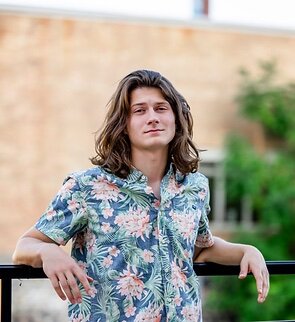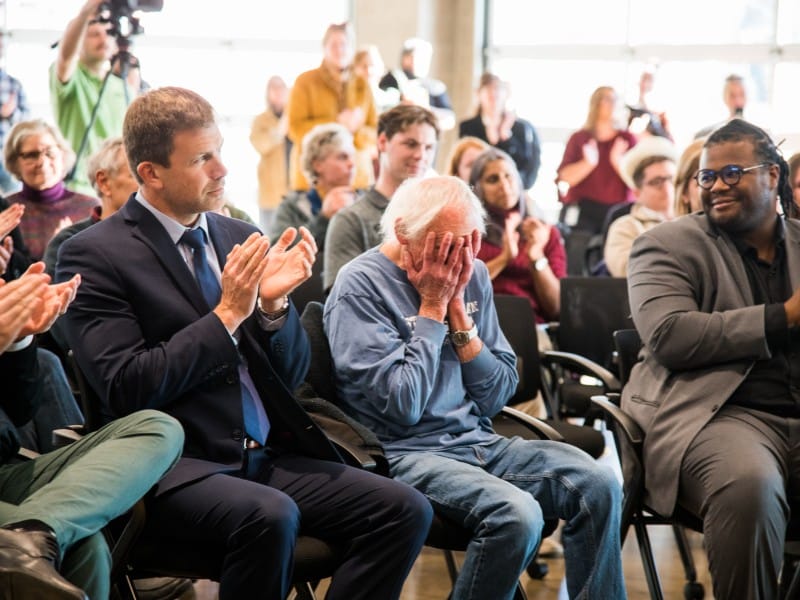Voices of Youth: Youth advisory councils give youth experience seeking and funding solutions
Foundation-based youth advisory councils provide a valuable opportunity for youth to speak up about issues and solutions they think will matter.
Editor’s Note: This story is part of Southwest Michigan Second Wave’s Voices of Youth Battle Creek program supported by the BINDA Foundation, City of Battle Creek, Battle Creek Community Foundation, and the Michigan After School Partnership. This series features stories created by Calhoun County youth in partnership with professional mentors.
BATTLE CREEK, MI — According to Scientific American, two-thirds of American youths cannot read proficiently. Twenty percent are obese, and another 15 percent do not know where their next meal is coming from. While these large-scale problems facing youth attract a lot of attention, there is a less obvious problem: youth voices are often overlooked when it comes to solutions.
The struggles of youth are so often looked at with a certain sense of tragedy. Why is this happening to them? They have done nothing to deserve this, and can’t solve this problem on their own. While there is truth to these statements, it is these very views that often cause youths to be separated from the solutions.
But this type of thinking can be unproductive and counterintuitive. Shouldn’t the people most affected by the problem also be a part of the solution? After all, they know its consequences the best. They have the best insight on what would help.
This is a view that is becoming more mainstream. More organizations are being set up and run by youths for youths. The first Michigan foundation-associated youth advisory councils were created in the early 1990s but became more popular around the turn of the 21st century.
Why I joined BCCF’s Youth Alliance Committee
Full disclosure: I am a member of BCCF’s YAC. The youth committee, formed in 1989, is made up of high-school youth representing different Battle Creek area public and private schools who are committed to improving the quality of life for youth through grantmaking, volunteerism, “evaluating needs & interests of youth, and actively engaging in various community projects,” according to its website page.
Much has been done to support YACs throughout the region and state. The W.K Kellogg Foundation has invested $35 million into the Community Foundation Youth Project Initiative, with the hopes of setting up more interactive youth programs in communities. The Council of Michigan Foundations created their Michigan Communities’ Foundations Youth Project in collaboration with Kellogg.
Kyle Caldwell, President and CEO of the Council of Michigan Foundations, is a big fan of foundation-centered Youth Advisory Councils.
“Across Michigan, more than 1,500 young people serve on 86 youth grantmaking committees – youth advisory councils (YACS) — distributing thousands in grants to their communities,” says Caldwell. “They are leaders who are making a difference and building lifelong habits of strategic giving and problem-solving — a valuable force for good for Michigan’s future.”
It is through these initiatives that the Battle Creek Community Foundation started its own youth council. The Youth Alliance Committee is a combination of students from local high schools who came together to benefit the communities where they lived.
What started off as a ragtag group of high school students with an ill-defined objective was quickly polished into an organization wanting and able to help those around them. They accomplished this by conducting surveys of the local youth population every three years to find the issues that are most important to them. Then using grant money supplied by generous donors they search for community programs that look to address these issues and help fund them.
These surveys and funding activities have continued in the 30 years since inception. The problems trying to be solved may have evolved with the community but they are still there, in need of someone to focus on them.
Addressing a spike in juvenile crime
One problem that caught YAC’s attention this grant cycle was that of spiking juvenile crime rates in Battle Creek as well as the continued substance abuse by the most vulnerable youths in our community.
To address these concerns, they focused on two proposals brought to them. The first proposal was through a local church, focusing on moral recognition therapy. The project tries to solve the rising crime rates by focusing on at-risk youth and families. The 12-week program looks to bring together families to gain a deeper understanding of the children’s emotional well-being and the reasons they are acting out in such a way.
The next project is looking to combat substance abuse in the high school-aged population. The program is run by a parent-child duo with experience in drug abuse and recovery. Looking to share their experience as a family and how it destroys not only the lives of the addicted but also the people who hold them close.
Both of these organizations did get the funding they requested from the Youth Alliance Committee. But not every organization is as lucky, as the vetting they go through by the leaders of YAC is intensive.
YAC’s grantmaking process
Each organization is closely vetted by the Community Foundation staff and the directors of the Youth Alliance Committee. The purpose of this vetting is to make sure the money is spent correctly with the express goal of helping the youth.
“Since YAC is focused on youth programming in the greater Battle Creek Area, the applications must be for programs meeting those requirements of location and purpose,” Kyra Hill, the director of YAC explains.
Along with the purpose and funding needs of the organizations. They are also required to release their planned use of the money. This is where the youths get a large say in how the money is used. They may decide whether or not to award an organization funds. But also are allowed to specify what the funds must be used for.(i.e. must be used for program expenses, not employee salary, etc.).
“There have been times when organizations have come in to ask for a grant, and YAC has been pretty tough on them because they feel that the program wasn’t having the impact the application said it was,” says Hill.
This highlights the careful decision-making processes that go into grantmaking. The YAC has only limited funds for what seems to be mounting pressure and problems on the youths.
YAC benefits the community and YAC members
The youths whose programs these grants fund aren’t the only ones getting helped in this process. Just as much as the youths who sit on these committees, YAC members deepen their understanding of teamwork and real-world business processes are also immensely helped.
Throughout the history of YAC as an organization, one of the main focuses of the committee is to develop young leaders of the community, and problem solvers who have in-depth knowledge of the issues.
These efforts have paid off. The current group of YAC committee members is a roster of highly motivated, highly skilled youth who are optimistic about the future — a group of dreamers who credit a lot of their success to the work they have done on this board.
“Looking back at it, YAC has helped me a lot,” says Elijah Fox, a longtime YAC member and their treasurer “It taught me how to make a difference in my community, how to disagree with others respectfully while also advocating for your own opinions and ideas”
Another YAC member, Pablo Camargo Tang, says it this way: “I know this experience will help me in college. Just the feeling of making a difference is something I hope to explore more in college.
“In fact I believe that YAC is an important reason I got in [to the University of Pennsylbania] seeing that I was doing something important to help my community really helped me connect with the admission officers, I feel.”

Trey Sebring is a senior at Battle Creek Central High School and the Battle Creek Area Mathematics and Science Center. He is a member of Central’s tennis team, The Youth Alliance Committee, as well as an organizer of the High School Climate Change Symposium. In his spare time, he enjoys mountain biking, camping, rock climbing, and all things coming from Nature.












